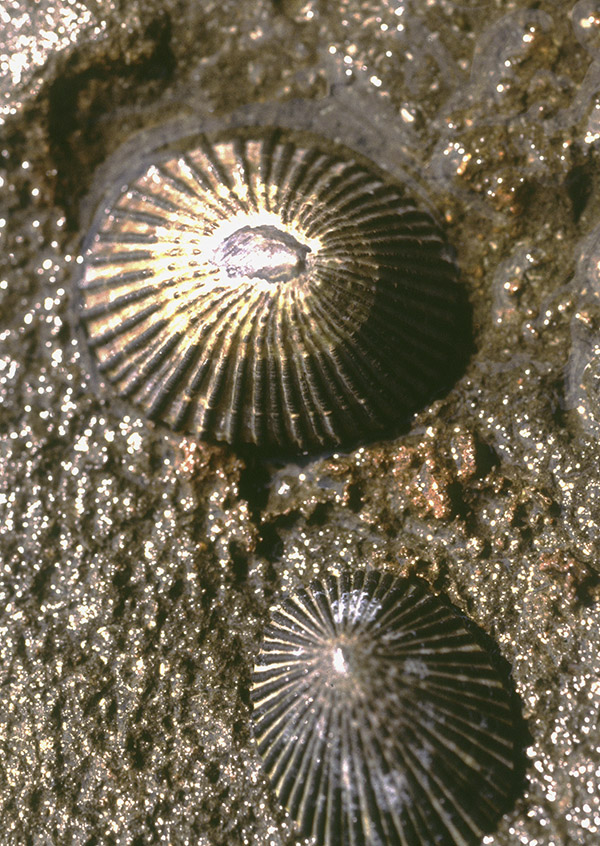Published in the Ocean Watch column, Honolulu Star-Advertiser © Susan Scott
May 4, 2015
Until recently, researchers thought spider silk was nature’s strongest material. Now the title goes to limpet teeth.
Using high-tech microscopy, engineers at the University of Portsmouth, England, studied the structure of limpet teeth and discovered they consist of fibers combining an iron-based mineral with a protein.
In testing how much force those tightly packed fibers could withstand before breaking (engineers do the darndest things), the researchers got a surprise. The teeth equaled the strength of man-made carbon fiber but were more flexible. To picture how extraordinary this is, imagine 3,300 pounds of rice dangling from one string of spaghetti.
 Black-foot opihi are also known as limpets.
Black-foot opihi are also known as limpets.
©2015 Susan Scott
The exciting discovery has the potential to shape the future building materials of airplanes, cars, boats and even dental fillings.
Who knew that limpets, called opihi in Hawaii, even had teeth? They do. Dozens of tiny teeth line an opihi’s tongue, a muscular structure rolled up inside the snail’s body. When it’s time to eat, the limpet unrolls its prickly tongue, strolls around its rocky neighborhood and scrapes up algae.
Limpets also chew rocks. In the process of cropping algae, the tough teeth break off pieces of rock. The creature’s digestive system absorbs the algae but hardens the rock pieces and expels them in fecal pellets resembling tiny cakes of concrete.
Rock eating is also handy for excavating homes on wave-washed shorelines. After foraging, each opihi returns to its “home scar,” a depression it has dug in a rock.
Hawaii hosts four opihi species found only in the isles, ranging from 2 inches in diameter to 4. Another smaller limpet, about three-quarters of an inch in diameter, called the false opihi, belongs to another family. Hawaiians named it opihi awa, meaning bitter opihi, and did not eat it.
Lots of people, however, ate the tasty others until they became scarce in the main islands.
Because so many people have lost their lives picking opihi on rocky shores pounded by big surf, opihi are considered one of the most dangerous marine animals in Hawaii waters. One historian wrote that opihi gathering was so dangerous, it was known in old Hawaii as the “fish of death.”
To conserve this popular snail snack, and give opihi a chance to mow down algae growth, state laws regulate opihi picking. To take one, the shell diameter must be at least 11⁄4 inches.
If you’re eating one of the cap-shaped snails, though, don’t bother looking for its teeth. At less than a millimeter long, they’re too small for the human eye to see.